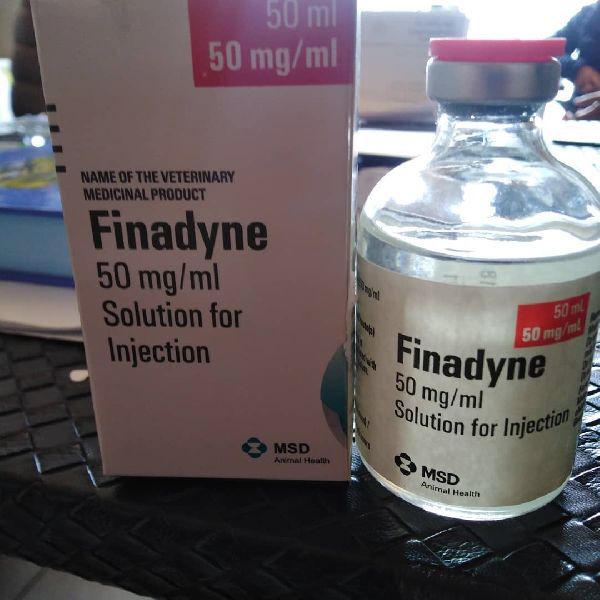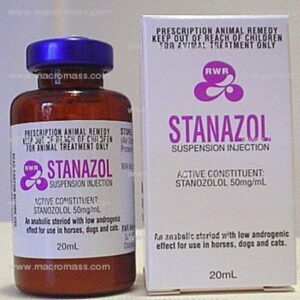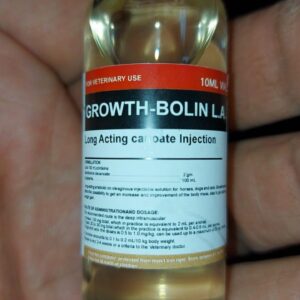finadyne injection
Original price was: $50.00.$45.00Current price is: $45.00.
finadyne injection is a veterinary medication primarily used for its anti-inflammatory and analgesic properties. Here’s a comprehensive active ingredient is flunixin meglumine
finadyne injection is a veterinary medication primarily used for its anti-inflammatory and analgesic properties. Here’s a comprehensive active ingredient is flunixin meglumine a non-steroidal anti-inflammatory drug (NSAID).
– **Formulation**: It is available as an injectable solution.
### **Uses and Indications**
– **Anti-Inflammatory**: Used to reduce inflammation in various conditions, including musculoskeletal disorders and other inflammatory diseases.
– **Analgesic**: Provides relief from pain, making it useful in conditions such as colic in horses, acute injuries, or post-surgical pain.
– **Antipyretic**: Reduces fever in animals with pyrexia or infections.
### **Administration**
– **Route**: Typically administered intramuscularly (IM) or intravenously (IV). The exact route will depend on the animal’s condition and the veterinarian’s instructions.
– **Dosage**: The dosage varies depending on the type of animal, the condition being treated, and the severity of the symptoms. It is crucial to follow the veterinarian’s dosage recommendations precisely.
### **Dosage Guidelines**
– **Horses**: Commonly used at a dosage of 1.1 mg/kg body weight, administered once or twice daily, depending on the severity of the condition.
– **Cattle**: Dosage may differ; consult the veterinarian for specific guidelines.
### **Side Effects**
– **Common**: Gastrointestinal upset, such as diarrhea or reduced appetite.
– **Serious**: Prolonged use can lead to ulcers or bleeding in the gastrointestinal tract, kidney issues, or liver problems.
– **Monitoring**: Regular monitoring for adverse reactions and effectiveness is recommended during treatment.
### **Precautions**
– **Pre-existing Conditions**: Use with caution in animals with pre-existing gastrointestinal, renal, or hepatic conditions.
– **Concurrent Medications**: Be aware of potential interactions with other medications. Inform the veterinarian of all other treatments the animal is receiving.
– **Not for Use**: In animals with known hypersensitivity to flunixin or other NSAIDs.
### **Storage**
– **Storage Conditions**: Store at room temperature, away from direct sunlight, and ensure the vial is well-sealed to prevent contamination.
### **Warnings**
– **Veterinary Use Only**: Finadyne Injection should be used under the supervision of a qualified veterinarian.
– **Regulatory Compliance**: Ensure compliance with local regulations regarding the use of NSAIDs in animals.
### **Consultation**
For precise information about Finadyne Injection, including specific dosage and administration details, always consult a veterinarian. They can provide tailored advice based on the animal’s health condition and needs.
### **Product Label**
Review the product label or packaging for specific information regarding concentration, usage instructions, and additional warnings. The label will provide critical details to ensure safe and effective use.
### **Manufacturer Information**
For further details, including potential side effects and product inquiries, contact the manufacturer directly. They can offer additional guidance and support related to the product.
If you need more specific information or have concerns about using Finadyne Injection, discussing it with your veterinarian is the best course of action. They will ensure the appropriate use and monitoring for the health and safety of your animal.
is a veterinary medication primarily used for its anti-inflammatory and analgesic properties. Here’s a comprehensive overview of Finadyne Injection:
### **What is Finadyne Injection?**
– **Active Ingredient**: The active ingredient in Finadyne Injection is **flunixin meglumine**, a non-steroidal anti-inflammatory drug (NSAID).
– **Formulation**: It is available as an injectable solution.
### **Uses and Indications**
– **Anti-Inflammatory**: Used to reduce inflammation in various conditions, including musculoskeletal disorders and other inflammatory diseases.
– **Analgesic**: Provides relief from pain, making it useful in conditions such as colic in horses, acute injuries, or post-surgical pain.
– **Antipyretic**: Reduces fever in animals with pyrexia or infections.
### **Administration**
– **Route**: Typically administered intramuscularly (IM) or intravenously (IV). The exact route will depend on the animal’s condition and the veterinarian’s instructions.
– **Dosage**: The dosage varies depending on the type of animal, the condition being treated, and the severity of the symptoms. It is crucial to follow the veterinarian’s dosage recommendations precisely.
### **Dosage Guidelines**
– **Horses**: Commonly used at a dosage of 1.1 mg/kg body weight, administered once or twice daily, depending on the severity of the condition.
– **Cattle**: Dosage may differ; consult the veterinarian for specific guidelines.
### **Side Effects**
– **Common**: Gastrointestinal upset, such as diarrhea or reduced appetite.
– **Serious**: Prolonged use can lead to ulcers or bleeding in the gastrointestinal tract, kidney issues, or liver problems.
– **Monitoring**: Regular monitoring for adverse reactions and effectiveness is recommended during treatment.
### **Precautions**
– **Pre-existing Conditions**: Use with caution in animals with pre-existing gastrointestinal, renal, or hepatic conditions.
– **Concurrent Medications**: Be aware of potential interactions with other medications. Inform the veterinarian of all other treatments the animal is receiving- **Not for Use**: In animals with known hypersensitivity to flunixin or other
– **Storage Conditions**: Store at room temperature, away from direct sunlight, and ensure the vial is well-sealed to prevent contamination.
### **Warnings**
– **Veterinary Use Only**: Finadyne Injection should be used under the supervision of a qualified veterinarian.
– **Regulatory Compliance**: Ensure compliance with local regulations regarding the use of NSAIDs in animals.
For precise information about Finadyne Injection, including specific dosage and administration details, always consult a veterinarian. They can provide tailored advice based on the animal’s health condition and needs.
### **Product Label**
Review the product label or packaging for specific information regarding concentration, usage instructions, and additional warnings. The label will provide critical details to ensure safe and effective use.
Manufacturer Information
For further details, including potential side effects and product inquiries, contact the manufacturer directly. They can offer additional guidance and support related to the product.
If you need more specific information or have concerns about using Finadyne Injection, discussing it with your veterinarian is the best course of action. They will ensure the appropriate use and monitoring for the health and safety of your animal.








Reviews
There are no reviews yet.